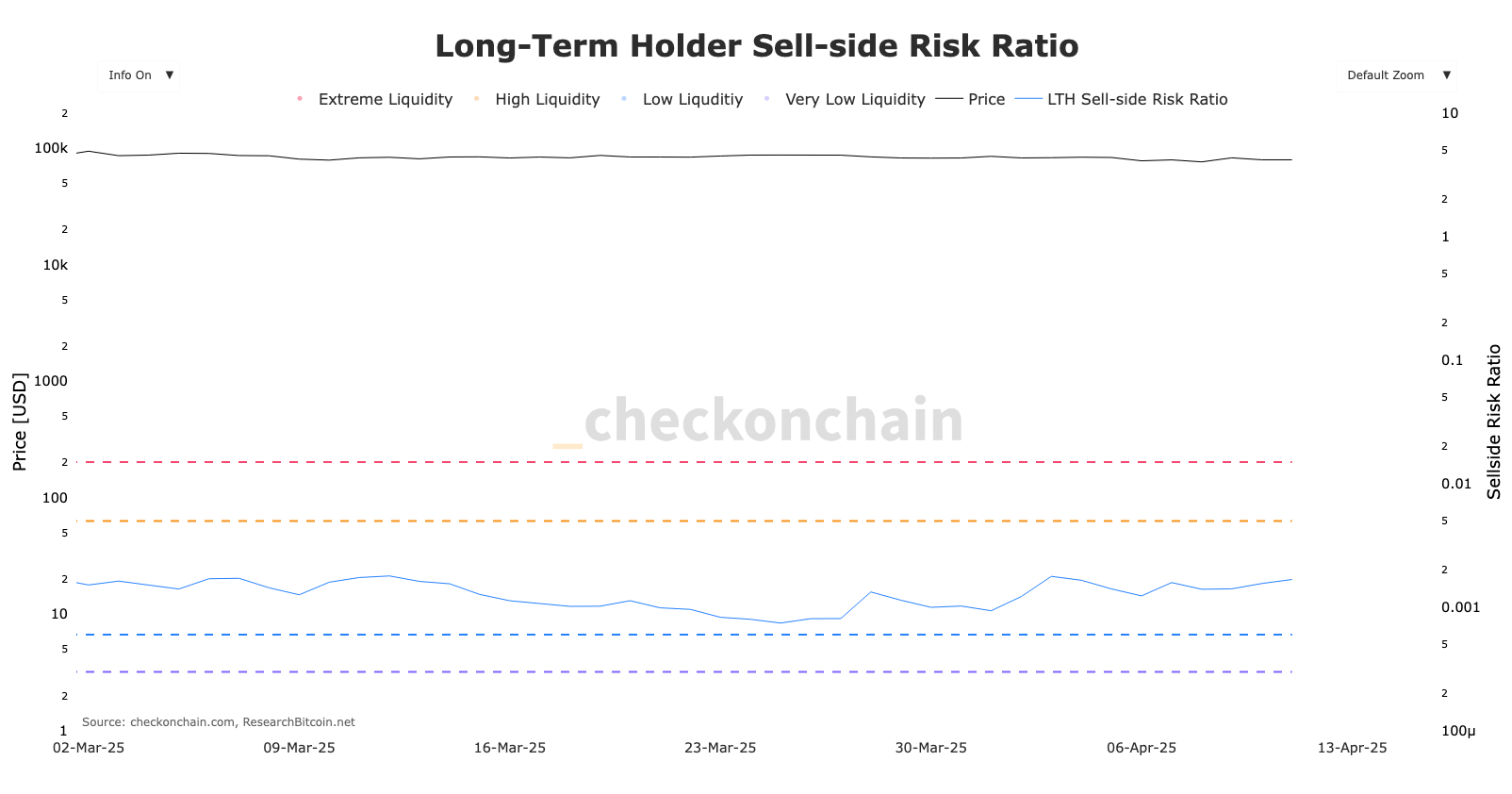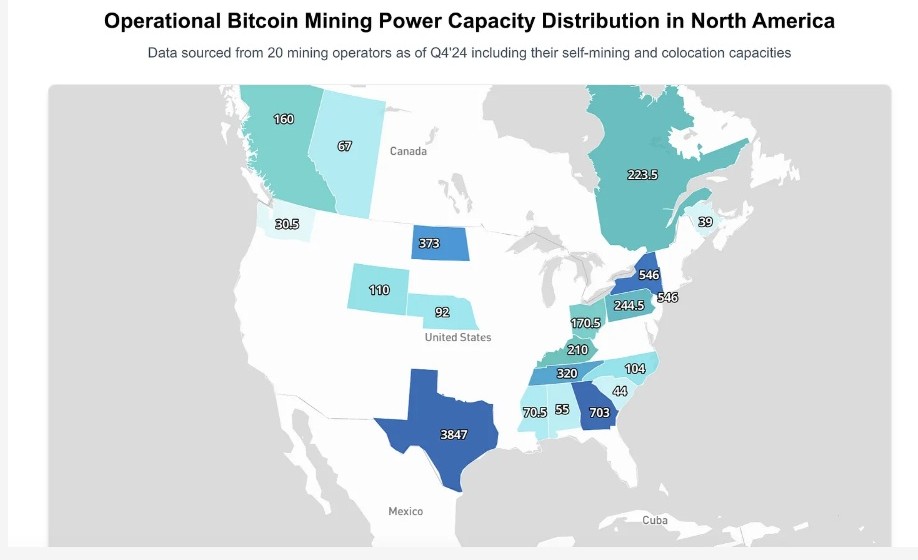
The sell-side risk ratio is an indicator of behavior designed to assess the likelihood of Bitcoin holders selling coins based on past accumulation and current market conditions. Low value suggests that holders are unlikely to spend, while high value indicates increased incentives to realize profits and reduce losses. Segmenting this ratio across long-term and short-term cohorts gives us insight into how different parts of the market respond to volatility.
The sell-side risk ratio for long-term holders shows only a modest increase. On March 23, this ratio sat at 745.8μ, gradually rising to 0.001679 by April 10th. This increase is statistically mild, in contrast to the sharp movements seen especially in short-term cohorts. Despite geopolitical escalations and increasing noise in the derivatives and ETF market, it suggests that long-term holders are not engaged in panic sales or strategic exits.

Instead, their actions coincide with a continuous accumulation stage. The group’s 30-day net position change has risen by April 10th, up from 0.17% on March 12 to 2.19% for a month. This shows that long-term held coins continue to move into stronger hands through direct acquisition or passive aging.

This accumulation is particularly noteworthy when juxtaposed with price action. Bitcoin was traded above $82,000 in the days leading up to April 10th, but only to see the sudden drawdown as the price approaches the $76,000 level. The fact that long-term holders are still adding positions during this price instability means that current retracements are eroded, viewing the general market environment as part of a larger accumulation stage. Historically, long-term holders tend to distribute during periods of happiness and aggressive price discovery rather than geopolitical or macro-driven pullbacks.
The behavior of a short-term holder draws another picture. This group is much more responsive, with seller risk ratios varying within a broader and volatile range. Since the beginning of the year, this metric has moved between 425μ and 0.001855.
The latest stretch from April 6 to April 10 jumped from 713μ to 0.001302, following escalating tensions between the US and China, extensive sales of risky assets, and meaningful outflows from spot Bitcoin ETFs. This sudden increase in sell-side risk from short-term participants suggests increased sensitivity to price and macrotrigger.
Unlike their long-term counterparts, short-term holders tend to have weaker beliefs, higher leverage exposure, and shorter time. The trend of selling in response to volatility amplifies inter-day fluctuations and contributes to short-term liquidity stress. This is particularly relevant given that we are facing a $450 million spill from the Bitcoin ETF over several sessions. The confluence of short-term sales pressure and ETF redemption creates a reflective loop in which price drops worsen by fear-selling weaker moves.

However, the structural meaning of this divergence is stable rather than unstable. Short-term sales alone do not inherently compromise Bitcoin’s long-term trajectory. What’s important is whether long-term holders will respond to these sales by reducing their own exposure. That’s not happening so far. The sustained accumulation of long-term holders, even if the market corrects, suggests that the market is experiencing a short-term rebalancing.
It is important to consider a broader macro background to contextualize these behaviors. China’s announcement of a 125% tariff on US goods has spiked geopolitical frictions while putting pressure on global risk markets.
Gold is gathering as capital seeks security, oil is declining amid fears of demand, weakening US stock futures. Bitcoin, on the other hand, struggles to find a clear direction due to its dual role as a hedge against risk-on speculative assets and macroeconomic stress. In this context, it is natural to expect participants with lower time preferences to be ejected while more strategic capital consolidates positions.
Long term holders continue to accumulate as short-term sellers respond to market stress.








